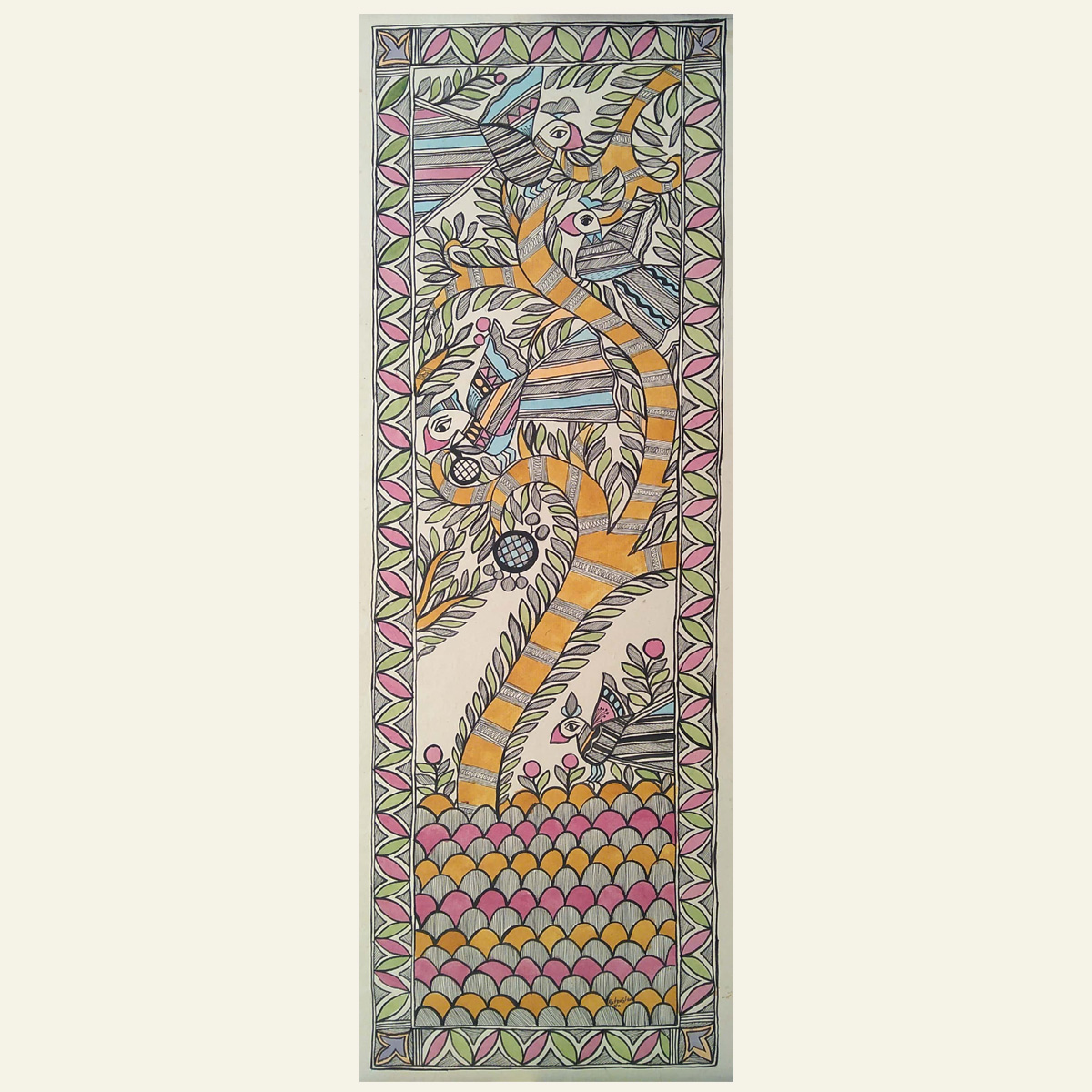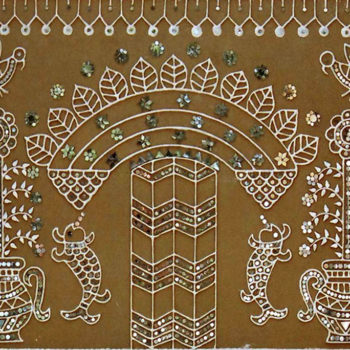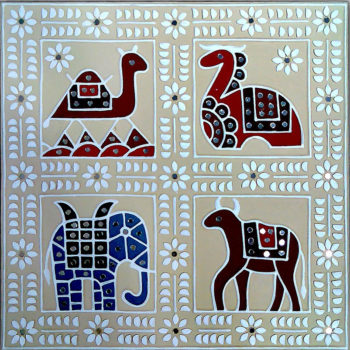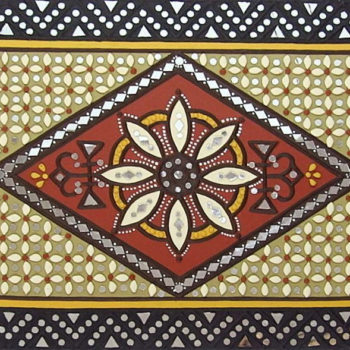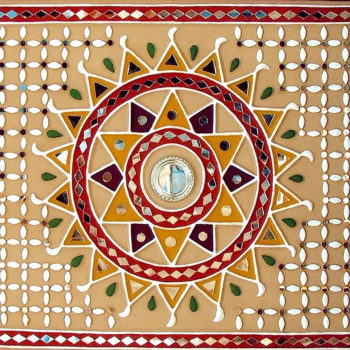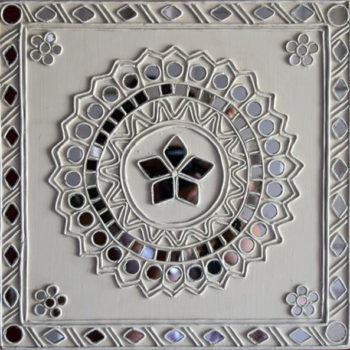State level awardee

Look closely at this picture. Do you see the beautiful mirror work on the walls of these bhungas (mud houses)? It is known as Lipan kaam or mud mirror work. It covers the interior as well as exterior walls of bhungas and keeps them cool throughout the harsh summer.
Though the origin is unknown, various communities in the Kutch district of Gujarat do this type of mud-relief work that is also known as Chittar Kaam.
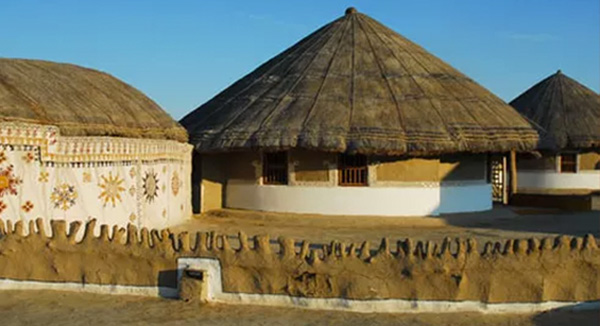
Let us know more about this unique art form the story of Keshav.
16 –year-old Keshav belongs to the Rabari community in a village called Kala Dungar in the Kutch district of Gujarat. Lipan kaam is widely used in the bhungas in his village, whose walls are made of clay and roofs are thatched and wood-based.

Keshav has grown up watching his mother and aunties working together to decorate the inner and outer walls of their home while singing songs and teasing each other. The men would dig the mud, source the camel or wild ass dung that is used as a binding agent, and bring them the worksite.

Keshav is one of the most talented Lipan artists in his village. Villagers admire the symmetry of his patterns, his use of mirrors, as well as his designs that are inspired by embroidery patterns.

The clay he uses is made by mixing equal portions of camel or wild ass dung and clay which is then kneaded into dough. Once the clay is ready, he takes small portions of it and rolls them on the floor or between his palms into cylinders of various sizes and thicknesses depending upon the design he has in mind. He moistens the clay walls and creates lines to define the boundary of his artwork. Then he begins to create different shapes with the rolled pieces of clay and uses his fingers to pinch and shape the clay. He constantly applies moisture to the pieces of clay to ensure that they don’t crack while he is creating his design. The artwork projects slightly from the background.
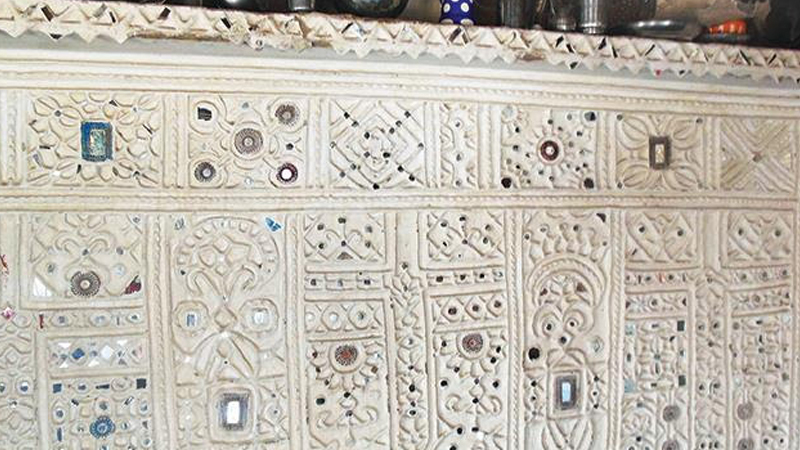
With adhesive, he sticks mirrors of different shapes – triangular, round, and diamond. 4-5 days later, when the clay dries, he paints his artwork with a layer of white clay made from the local sand that is rich in salt content. Although Lipan kaam is mostly done in white, Keshav also uses bright colours such as green, red and blue over his dried clay work. Once the work is complete, the walls look stunning with mirrors embedded in them, just like embroidery patterns found in the region.

In addition to beauty, Lipan kaam also has utility. It acts as an insulator as it reflects light when used on the exterior walls of bhungas, thus helping to keep the home cool. Inside the bhungas, because of the mirrors used, a single lamp lights up the home considerably.
Lippan Artisans

Gani Mara
LippanPast Workshops
The Store



